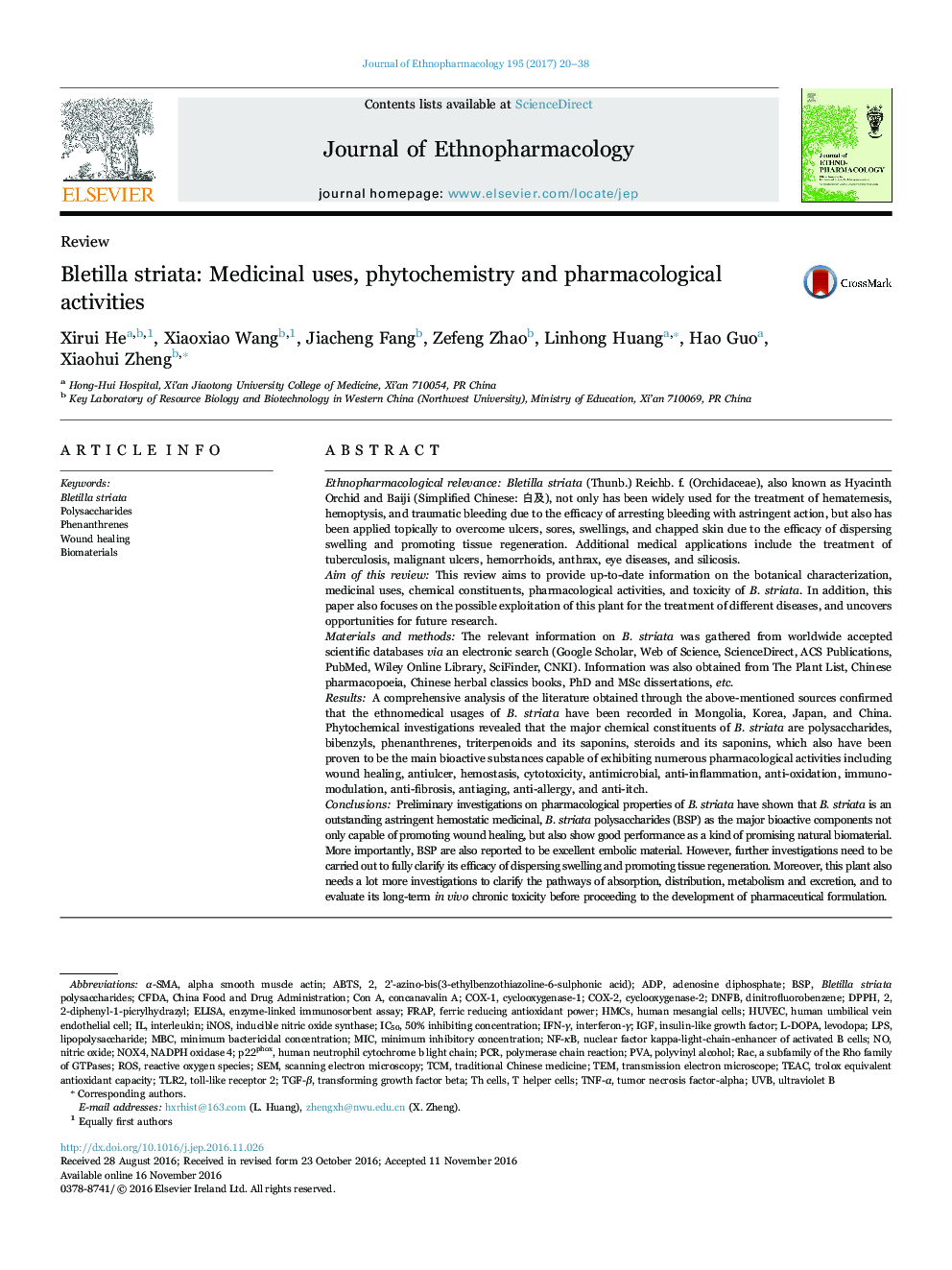| کد مقاله | کد نشریه | سال انتشار | مقاله انگلیسی | نسخه تمام متن |
|---|---|---|---|---|
| 5556368 | 1560367 | 2017 | 19 صفحه PDF | دانلود رایگان |

Ethnopharmacological relevanceBletilla striata (Thunb.) Reichb. f. (Orchidaceae), also known as Hyacinth Orchid and Baiji (Simplified Chinese: ç½å), not only has been widely used for the treatment of hematemesis, hemoptysis, and traumatic bleeding due to the efficacy of arresting bleeding with astringent action, but also has been applied topically to overcome ulcers, sores, swellings, and chapped skin due to the efficacy of dispersing swelling and promoting tissue regeneration. Additional medical applications include the treatment of tuberculosis, malignant ulcers, hemorrhoids, anthrax, eye diseases, and silicosis.Aim of this reviewThis review aims to provide up-to-date information on the botanical characterization, medicinal uses, chemical constituents, pharmacological activities, and toxicity of B. striata. In addition, this paper also focuses on the possible exploitation of this plant for the treatment of different diseases, and uncovers opportunities for future research.Materials and methodsThe relevant information on B. striata was gathered from worldwide accepted scientific databases via an electronic search (Google Scholar, Web of Science, ScienceDirect, ACS Publications, PubMed, Wiley Online Library, SciFinder, CNKI). Information was also obtained from The Plant List, Chinese pharmacopoeia, Chinese herbal classics books, PhD and MSc dissertations, etc.ResultsA comprehensive analysis of the literature obtained through the above-mentioned sources confirmed that the ethnomedical usages of B. striata have been recorded in Mongolia, Korea, Japan, and China. Phytochemical investigations revealed that the major chemical constituents of B. striata are polysaccharides, bibenzyls, phenanthrenes, triterpenoids and its saponins, steroids and its saponins, which also have been proven to be the main bioactive substances capable of exhibiting numerous pharmacological activities including wound healing, antiulcer, hemostasis, cytotoxicity, antimicrobial, anti-inflammation, anti-oxidation, immunomodulation, anti-fibrosis, antiaging, anti-allergy, and anti-itch.ConclusionsPreliminary investigations on pharmacological properties of B. striata have shown that B. striata is an outstanding astringent hemostatic medicinal, B. striata polysaccharides (BSP) as the major bioactive components not only capable of promoting wound healing, but also show good performance as a kind of promising natural biomaterial. More importantly, BSP are also reported to be excellent embolic material. However, further investigations need to be carried out to fully clarify its efficacy of dispersing swelling and promoting tissue regeneration. Moreover, this plant also needs a lot more investigations to clarify the pathways of absorption, distribution, metabolism and excretion, and to evaluate its long-term in vivo chronic toxicity before proceeding to the development of pharmaceutical formulation.
578
Journal: Journal of Ethnopharmacology - Volume 195, 4 January 2017, Pages 20-38